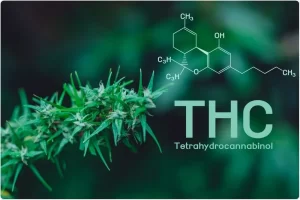
Understanding THC levels in cannabis products is crucial for consumers, especially in an industry where misrepresentation is a concern. THC (tetrahydrocannabinol), the primary psychoactive component in cannabis, is what primarily determines the potency and effects of the product. But deciphering THC levels isn’t always straightforward. This guide aims to demystify THC percentages, explain how they are calculated, and offer tips to help consumers make informed choices.
THC Levels and Decarboxylation
- Understanding THCA and THC: Cannabis naturally contains THCA (tetrahydrocannabinolic acid), a non-intoxicating compound. When heated, THCA undergoes decarboxylation, converting into psychoactive THC. This process isn’t 100% efficient, as not all THCA converts to THC, and some THC may degrade at very high temperatures.
- Total THC Calculation: The “total THC” on product labels represents the potential THC level if all THCA is converted to THC. However, since THC is lighter than THCA, and the conversion isn’t entirely efficient, total THC is calculated using a specific formula accounting for these factors.
 Impact of Consumption Method
Impact of Consumption Method
- Decarboxylation Efficiency: The amount of THC available for consumption depends on how the product is used. Vaporization, for example, can affect how efficiently THCA is converted into THC. Different temperatures and devices lead to varying decarboxylation rates and THC availability.
THC Percentage and Strains
- High THC vs. Balanced Strains: High THC strains are potent but may not be suitable for everyone. Balanced THC/CBD strains offer a more moderate experience. Consumers should be aware that the same THC level can affect individuals differently, and personal preference plays a significant role in selecting the right product.
- Role of Terpenes: Terpenes, the aromatic compounds in cannabis, significantly influence the effects of a strain. They don’t impact potency directly but can alter the experience. Paying attention to the terpene profile is as important as understanding THC percentages.
THC Content in Different Products
- Flower vs. Concentrates: Cannabis flower typically contains 15-25% THC, with a biological limit around 35%. In contrast, concentrates can have THC percentages ranging from 50-90%, making them much more potent due to the higher concentration of cannabinoids and absence of plant material.
Guidelines for Consumers
- Start Small and Gradually Increase: Especially for those new to cannabis, it’s advisable to start with products with lower THC content and gradually increase as you become comfortable and understand your tolerance.
- Seek Lab-Tested Products: Lab-tested products provide more accurate information about THC and CBD levels. This transparency is crucial for consumers, especially those using cannabis for medical purposes.
Conclusion
Navigating THC levels in cannabis requires understanding the science behind it, acknowledging the variability in consumption methods and individual reactions, and recognizing the role of other compounds like terpenes. By being informed and cautious, consumers can make choices that best suit their needs and preferences, ensuring a safe and enjoyable cannabis experience.




